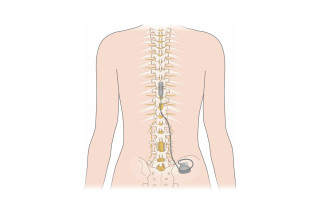The doctoral dissertation in the field of Applied Physics will be examined at the Faculty of Science and Forestry, Kuopio University Hospital and online.
What is the topic of your doctoral research?
In my doctoral thesis, I studied computational methods which can be applied in the clinical applications of neuronavigated transcranial magnetic stimulation (TMS). TMS is a non-invasive brain stimulation method, which places a coil on the scalp to activate cortical neurons via electromagnetic induction. Its main clinical applications include mapping of the motor cortex and depression therapy.
In motor mapping, TMS pulses are targeted at different cortical sites, and the resulting muscle responses are measured to estimate the location and size of the motor representation area. The spread of the TMS-induced electric field and the variability of muscle responses hinder outlining the motor representation areas, and no consensus currently exists on how to determine the representation area based on the motor map. More accurate evaluation of the representation areas in preoperative mapping would advance surgical planning.
In depression therapy, TMS pulses are targeted at the prefrontal areas of the brain. Traditionally, this targeting has been performed by utilising external anatomical landmarks, which causes inter-subject variation in the target location. This also increases the variability of treatment responses. More consistent and user-independent targeting would probably increase the efficacy of TMS treatments.
What are the key findings or observations of your doctoral research?
My doctoral research showed that the placement and orientation of the TMS coil have a major effect on the cortical electric field distribution and the strength of the resulting muscle response, which is often observed also as a muscle movement. Due to the electric field spread, motor mapping may overestimate the true extent of the motor repsesentation area, and the strongest muscle responses are induced in a relatively compact area in comparison with the motor map. In the doctoral research, the activated cortical area was estimated by applying a computational method which takes into account the electric field distribution induced by the stimuli constituting the TMS-based motor map.
My doctoral research also presented a user-independent method for TMS therapy targeting based on anatomical or functional brain atlases. This method was compared with a reference method which utilizes neuroanatomical landmarks to determine the therapy target. Based on this comparison, the presented computational method provided anatomically consistent targeting.
How can the results of your doctoral research be utilised in practice?
The computational method for more accurate delineation of the motor representation areas can be utilised in surgical planning, which may enable larger extents of resection and reduce the time required for the operation. In addition to the preoperative mapping, accurate motor maps are important in evaluating plastic cortical changes in several patient groups, such as stroke patients.
The developed treatment targeting method offers a practical tool for visualizing various brain areas during the treatments. This method is already used clinically to aid in depression treatment targeting.
What are the key research methods and materials used in your doctoral research?
The main research method of my doctoral research was neuronavigated TMS, which utilises individual magnetic resonance images to target the stimulation accurately on the cortex for motor mapping and therapy applications. To assess the activated cortex more accurately, the induced electric field was modeled in a realistic head model by applying the finite element method. The study subjects in the motor mapping studies were healthy volunteers.
The treatment targeting method applied freely available tools developed for the analysis of magnetic resonance images of the brain to combine a previously published brain atlas with the patient’s head model. This study utilised the magnetic resonance images of TMS therapy patients.
Neuronavigated TMS is a relatively new device which is used for functional brain imaging and therapeutic applications. Its usage is increasing globally, especially in the treatment of depression and pain, but also in mapping the cortical motor and language areas preoperatively. TMS is also widely used in neuroscientific research for studying normal brain function and pathophysiology of various neurologic disorders.
The doctoral dissertation of Jusa Reijonen, MSc (Tech), entitled Computational methods for advancing clinical applications of transcranial magnetic stimulation will be examined at the Faculty of Science and Forestry, Kuopio University Hospital, and online, on 1 April at 12 noon. The opponent will be Associate Professor Aapo Nummenmaa, Harvard Medical School, Athinoula A. Martinos Center for Biomedical Imaging, and the custos will be Professor Petro Julkunen, University of Eastern Finland. Language of the public defence is Finnish.
For further information, please contact:
Jusa Reijonen, jusa.reijonen@kuh.fi, p. 040 505 2804



